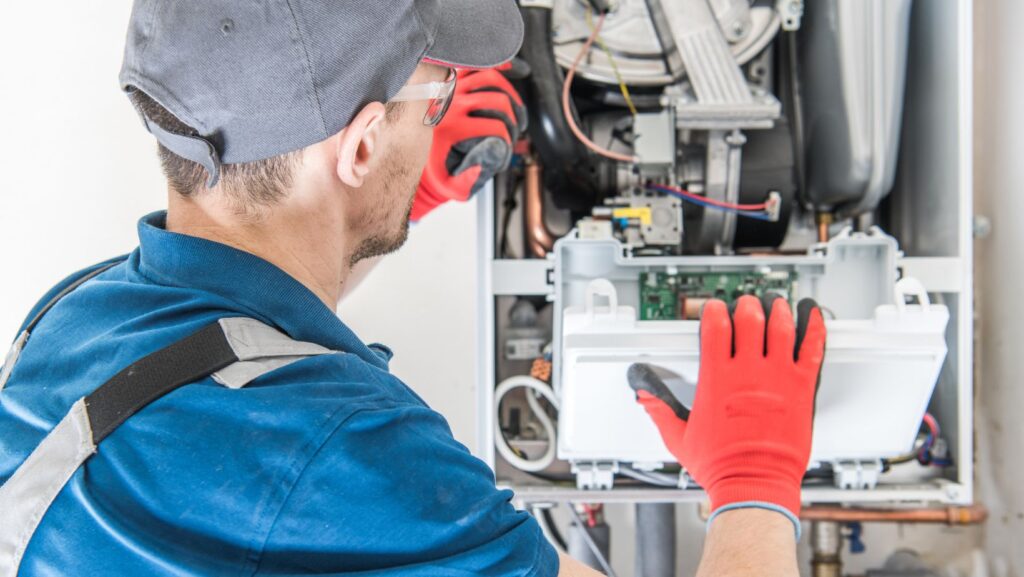As winter approaches, a well-functioning furnace becomes essential for maintaining a cozy home. However, many homeowners often overlook the subtle signs that their heating system might be in trouble. Ignoring these early warnings can lead to costly repairs and uncomfortable living conditions.
This guide will help you identify key indicators that your furnace needs professional attention. By recognizing these signs early, you can ensure your home stays warm and your heating system runs efficiently throughout the colder months.
Inconsistent Heating
Inconsistent heating in a home indicates potential furnace issues. Areas with uneven warmth often stem from a malfunctioning thermostat or obstructed airflow. If some rooms are colder than others, inspect the vents and filters first. Blocked or dirty filters restrict airflow, leading to temperature imbalances. Unexpected temperature changes might signal a failing blower motor or burner. If warm air suddenly turns cold, the furnace may cycle improperly or shut down prematurely, which compromises the home’s comfort. Regular maintenance checks can identify these issues early.
Professional furnace repair services can diagnose and fix these heating inconsistencies. They ensure the system operates efficiently, extending its lifespan and maintaining even warmth throughout the home. Properly functioning furnaces reduce the risk of unexpected breakdowns during cold months.
Unusual Noises
Uncommon noises from a furnace often signal a need for repairs. Scraping, thumping, and banging may indicate loose or broken components—essential warning signs for homeowners. Scraping could result from a detached blower wheel, while thumping might suggest an ignition problem. xBanging noises usually occur when air ducts are expanding or contracting but may also point to delayed ignition or gas buildup. Whistling sounds often relate to airflow issues. Blocked or dirty filters restrict airflow, leading the system to strain.

Clicking sounds might come from a faulty thermostat relay or a failing control board. Squealing or squeaking noises usually stem from a worn-out belt or motor bearings needing lubrication.
Frequent Cycling
Frequent cycling between the on and off states often indicates a problem with the furnace. It can stem from various issues such as a malfunctioning thermostat, poor airflow, or an oversized unit. A furnace that cycles too often can strain its components, leading to a potential breakdown and inefficient heating. Thermostat issues, such as improper calibration or placement in a drafty area, can cause the system to cycle incorrectly. If the thermostat sends inaccurate temperature readings, it may trigger the furnace to switch on and off unnecessarily.
Restricted airflow from clogged filters or blocked vents can also cause frequent cycling. When air can’t circulate properly, the furnace may overheat and shut off as a safety measure, only to restart once it cools down. Regular filter replacement and ensuring unobstructed vents can prevent this issue.
High Energy Bills
High energy bills often indicate a faulty furnace. Increased energy usage usually results from a system working harder than necessary to maintain the desired temperature. Such inefficiency typically stems from several issues including dirty filters, malfunctioning thermostats, or worn-out components. One common cause is dirty filters. When filters become clogged, the furnace has to work harder to push air through the system, leading to higher energy consumption. Replacing or cleaning filters regularly can help maintain efficient operation.
Malfunctioning thermostats also contribute to high energy bills. A thermostat that inaccurately reads temperature settings causes the furnace to run more frequently, consuming more energy. Calibrating or replacing the thermostat can rectify this issue.
Yellow Burner Flame
A furnace’s burner flame should always burn blue. A yellow flame signals incomplete combustion, indicating potential issues. Incomplete combustion often produces higher levels of carbon monoxide (CO), a dangerous gas. If a furnace’s flame burns yellow, immediate attention is necessary to prevent carbon monoxide poisoning.
Several factors contribute to a yellow burner flame:
- Dirty Burner: A sooty or clogged burner can restrict air flow, affecting combustion. Cleaning the burner can often resolve this issue.
- Improper Ventilation: Inadequate ventilation leads to insufficient oxygen supply for the burner. Ensure all vents and airways are clear to maintain a blue flame.
- Gas Pressure: Incorrect gas pressure can alter the flame color. A professional technician should check and adjust the pressure to safe levels.
- Contaminants: Presence of contaminants in the gas supply, like sulfur, can cause a yellow flame. Contaminated gas lines require thorough cleaning or replacement.

Signs of a yellow burner flame necessitate contacting furnace repair services. These professionals diagnose and fix underlying problems, ensuring safe and efficient operation. Ignoring the issue risks severe health hazards, including carbon monoxide poisoning. Immediate repairs enhance system performance and extend the furnace’s lifespan. Regular maintenance and timely interventions keep the flame blue, signaling a well-functioning furnace.
Poor Air Quality
Poor air quality can be a telltale sign that your furnace needs repair. If you notice an increase in dust, debris, or a musty smell throughout your home, it might indicate that your furnace’s filters are clogged or the ducts are dirty. These issues not only affect your health but also reduce the system’s efficiency. Addressing them promptly through professional maintenance can improve indoor air quality and ensure your furnace operates at peak performance. Regular upkeep and timely repairs are essential for a safe, efficient, and long-lasting heating system, providing comfort and peace of mind during the colder months.
